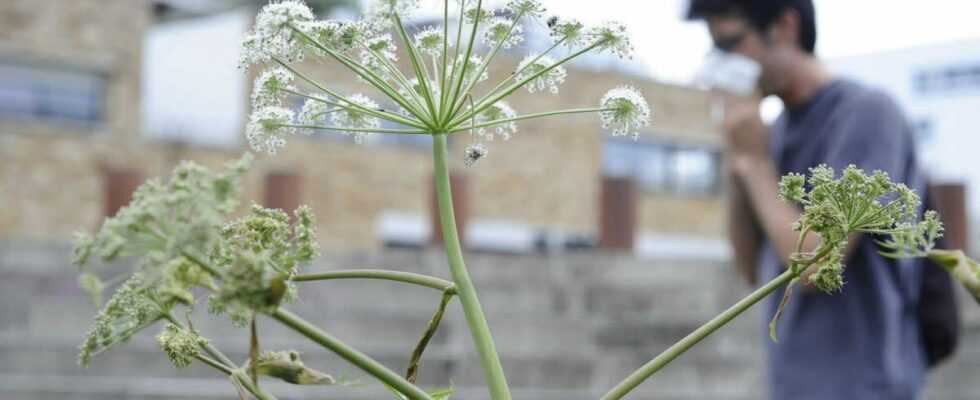Attention, the allergic risk is high, currently, on the whole of the Hexagon, concerning grass pollens. And it will remain so for several more weeks, warns the National Aerobiological Surveillance Network (RNSA).
Only seven departments are at “medium” risk: these are Landes, Pyrénées-Atlantiques, Eure, Seine-Maritime, Somme and Aisne.
In question ? The weather conditions: the sunny weather, the summer temperatures and the wind in recent days have indeed favored the emission and dispersion of high concentrations of grass pollen in the air.
What are grasses?
Grasses are herbaceous plants that we see growing along roads, in fields and even sometimes on roundabouts. Several are very allergenic, such as timothy, bluegrass, chaff, cocksfoot, fescue, fluff, rye, oats, wheat…
Grass pollen is present throughout France, generally from the beginning of May to the end of July.
What are the allergic symptoms?
These pollens have a very high allergenic potential, causing many ocular, nasal and even respiratory symptoms in allergy sufferers. For example, if you have a runny nose, if you sneeze frequently, if you have red, itchy, itchy or watery eyes, if you have an irritated throat, if you cough or if you have asthma-like difficulty breathing , you are definitely allergic.
Pollution and global warming, two aggravating factors
Note that episodes of air pollution can exacerbate these symptoms. Only stormy showers can bring some respite to allergy sufferers by placing pollen on the ground, but the rain also promotes the growth of grasses which then release more pollen when the sun returns…
In addition, climate change would contribute to the fact that there are more and more people with allergies, because “the rising temperatures favor a stronger flowering of grasses”, explains Samuel Monnier, engineer at the National Aerobiological Surveillance Network (RNSA ), on blue France.
Some practical advice for allergy sufferers
First of all, people suffering from allergies must imperatively follow the treatments prescribed by their doctors and allergists, or go to consult if they do not yet have one, insists the National Aerobiological Surveillance Network (RNSA).
Other advice: rinse your hair in the evening, ventilate at least ten minutes a day before sunrise and after sunset, avoid drying clothes outside, keep your car windows closed to prevent pollen from enter the passenger compartment, avoid sports activities outside, which leads to overexposure to pollen.
Finally, wearing a mask can also be a solution for allergy sufferers, allowing them to go out without being too exposed to pollen.
What about other allergenic pollens?
On the tree side, oak pollens, which are less allergenic than grasses, do not exceed the average level and arrive at the end of flowering.
On the other hand, around the Mediterranean, watch out for pollen from parietaires (from the urticaceae family) and olive trees, which are increasingly present and may bother allergy sufferers.
The risk of allergy is low for other flowering herbaceous plants almost everywhere in France, namely plantain, sorrel and nettle pollen (from the urticaceae family).
